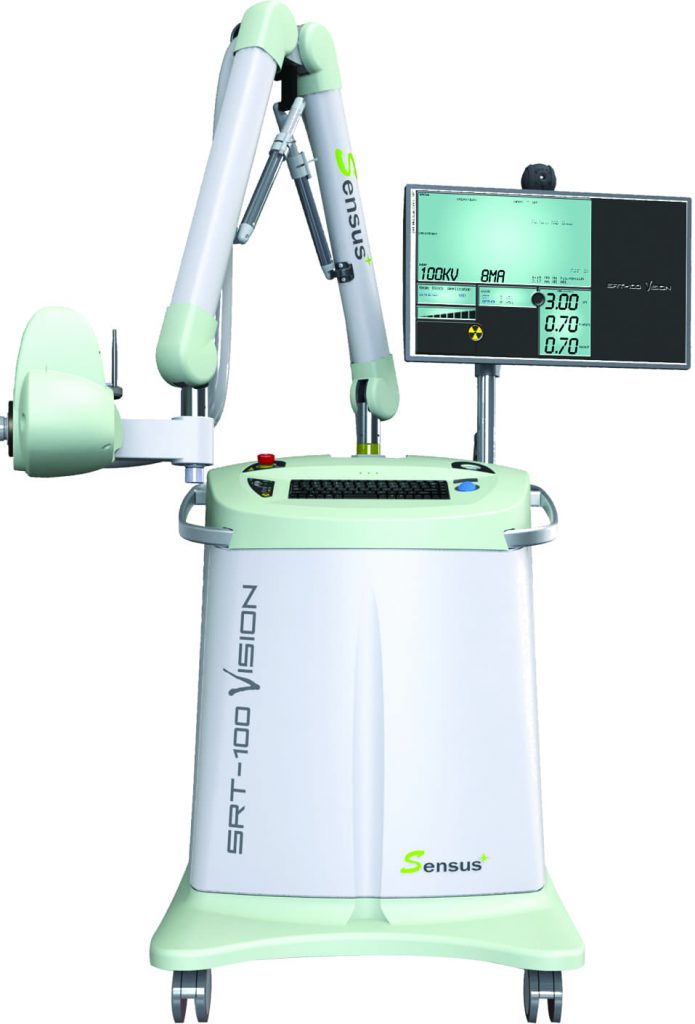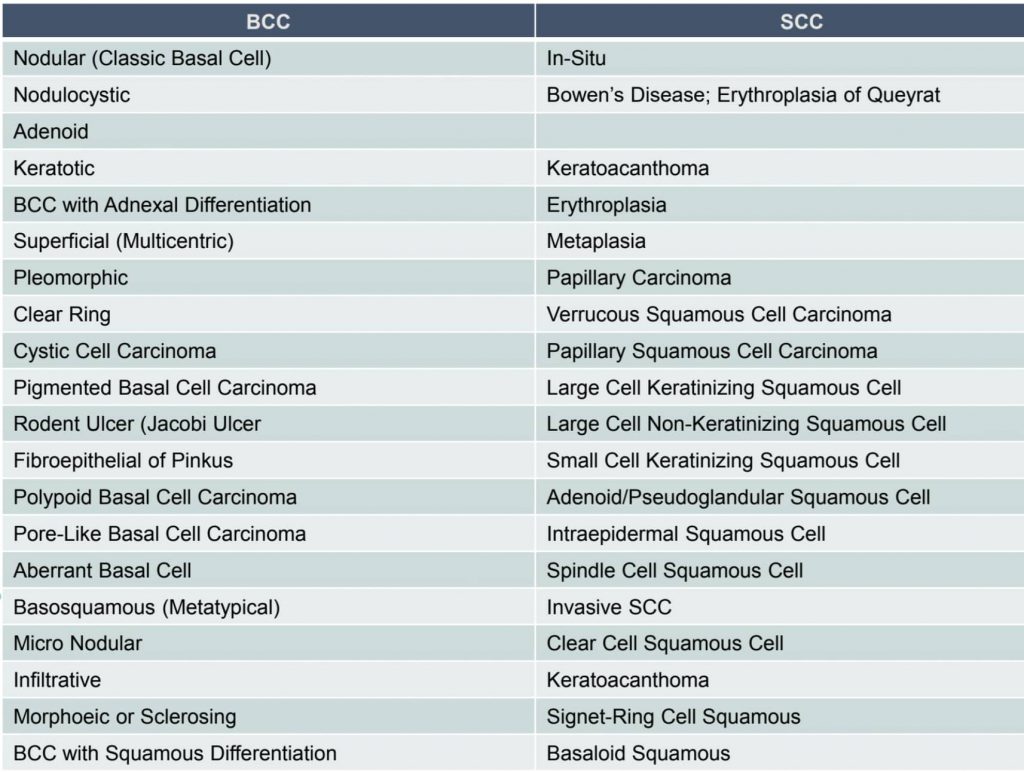
If you have been diagnosed with non-melanoma skin cancer, learn more about a gentler way to treat skin cancer.
The Science Behind IG-SRT
Waves in the electromagnetic spectrum vary in length. As electromagnetic waves shorten, their energy increases. Radiation therapy uses electromagnetic waves to kills cancer cells by damaging their DNA. Superficial Radiotherapy (SRT) uses low-level x-ray energy to kill non-melanoma skin cancer cells.

While superficial radiation therapy can effectively kill skin cancer cells, the radiation can also impact healthy cells.
There are three main considerations when treating patients with SRT:
- Accuracy. The better the radiation targets the cancer cells, the less damage there will be to surrounding healthy tissue.
- Dosage. Too much radiation applied too quickly can lead to skin breakdown and other side effects. Too little, on the other hand, and you risk not killing the cancer cells.
- Regulations. It is important to have a radiation protection program that protects you, your staff, and your patients. When you partner with SkinCure Oncology, you will have access to industry experts fluent in state-specific regulations.
Partnering with SkinCure Oncology gives you access to industry experts that are fluent in state-specific regulations. Using a high-frequency image guidance system helps to ensure the highest level of accuracy when targeting the cancer cells. When discussing treatment options with patients, it’s helpful to describe the advantage of Image-Guided SRT (IG-SRT) as “taking the blindfold off so we can see the cancer as we treat it.” IG-SRT is a vastly superior treatment option when compared to non-image-guided SRT, brachytherapy and other radiotherapy options.
IG-SRT not only improves targeting accuracy, it also plays a huge role in dosimetry. Without the advantage of image-guidance, radiotherapy solutions have to rely on fixed protocols for dosage delivered. With image guidance performed before each treatment, the dosage can be adjusted based on the effectiveness of previous treatment sessions. We call this approach to treatment “adaptive radiotherapy.” When you partner with SkinCure Oncology, you will have access to an image-guided adaptive radiotherapy protocol. It’s the gold standard for radiotherapy-based treatment of non-melanoma skin cancer and it results in a cure rate exceeding 99%.
Environmental safety is a top priority. Prior to deployment of the radiation therapy equipment, a room within the practice location must be converted into a radiation therapy suite. Specialized knowledge and experience is needed to do this right. Partnering with SkinCure Oncology makes it easy. We take into account physics guidelines and radiation shielding requirements, and have construction crews with extensive experience building out safe and attractive radiotherapy treatment rooms.
The state-of-the-art for radiotherapy-based treatment of non-melanoma skin cancer is the Sensus SRT-100 Vision ™
The SRT-100 Vision ™ uses a 100 kilovolt generator and an x-ray tube with a tungsten filament to generate an x-ray beam with peak voltage of 20 to 100 kVp.
The device has been cleared by the US FDA for the treatment of non-melanoma skin cancer.
Using a high-frequency ultrasound guidance system, the SRT-100 Vision™ provides three significant advantages over non-image-guided radiotherapy:
- Seeing results to date allows for an adaptive radiotherapy protocol, where the dosage can be modified for each treatment session based on the results of previous treatment sessions.
- Seeing while treating improves accuracy of the treatment through visual targeting of the cancer cells.
- Patients feel more a part of the process as they’re able to see what’s being treated and feel more confident with the results when they can see that the cancer is shrinking.
IG-SRT is clinically appropriate for the vast majority of non-melanoma skin cancer types
Image-Guided SRT is clinically appropriate for the majority of non-melanoma skin cancer types
When it comes to killing non-melanoma skin cancer, Image-Guided SRT has been shown to have superior outcomes. Please visit our Clinical Outcomes page to view the most recent studies on the effectiveness of Image-Guided SRT.
Click here for a printable PDF of the cancer types.

